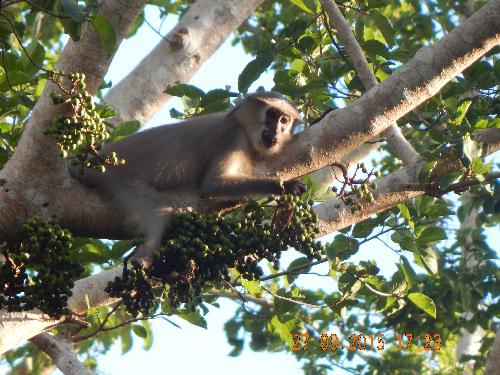Charles Kivasu Maingi
Other projects
19 Aug 2020
Promoting Tana Mangabey Population Recovery and Habitat Resilience through Community Outreach and Sensitization on Sustainable Forest Resources Use, Kenya
This project aims to minimize forest resource utilization and its negative implications on the conservation of the endemic and endangered Tana River mangabey, Cercocebus galeritus. This will be achieved through gathering new data on how human forest resource utilization affect primary plant foods of the mangabeys, current trends of forest resource utilization, resource exploitation strategies, and finally sensitize the local communities on importance of sustainable resource exploitation in conservation efforts of the Tana mangabeys. Understanding these resource utilization aspects and educating the local community on forest resource conservation will be important in protecting this nonhuman primate and its habitat. Further, implementing this project will be helpful in contributing towards reverting the negative impacts of unsustainable forest extraction favoring the conservation of the Tana River mangabeys. Lastly, it will be instrumental in seeking alternatives to forest products used by communities in the project site area minimizing pressure on primate forest habitats.

Tana River Mangabey on a Ficus sycomorus tree.
The increasing utilization of forest products puts pressure to the Tana River Mangabey (Cercocebus galeritus) population and its habitat. The project will target selected riverine forest fragments within the Tana River Primate National Reserve (TRPNR), which are utilized by the local communities. Previous studies have shown that human resource exploitation from these forest potentially impact on the Tana River Mangabeys (Medley, 1993; Moinde-Fockler et al., 2007) but there is poor understanding of resource exploitation strategies by locals and how this impacts on the species and its habitat. This project seeks to fill this knowledge gap by collecting new data on forest resources utilization, how this impacts on Mangabeys’ food resources, and educate the community on sustainable resource use or recommend alternative to forest resources use to minimize negative effects on the forest habitats
To achieve my project goal I plan to address the following specific objectives: i) document the existing data on forest resource utilization in the Tana River floodplain forests,
ii) collect detailed data on current forest resource use by locals and use the information to draft recommendations for sustainable exploitation of forest resources to enhance conservation of the endangered Tana River Mangabeys and their habitat,
iii) disseminate the results to the community and relevant agencies through publishing the results.
To accomplish my objectives, I will use structured questionnaire, formal interviews, and focused group discussions. During the implementation period, I will evaluate the success of the project by examining the project outputs or deliverable to ascertain whether the objectives I proposed will be accomplished within the project stipulated timelines.
Finally, the findings of this project will be used to help: develop habitat management and strategies in the region; restore the vegetation of the forest patches; conserve and protect the habitat not only for the Tana River Mangabeys and Tana Red Colobus but also other species which directly benefit from the habitat such as the African elephants; increase the community awareness on the conservation of the forest patches and the non-human primates in the region. In addition, the disseminated findings to the community groups will act as the baseline for development and formation of community-led habitat restoration and protection initiatives in the area.